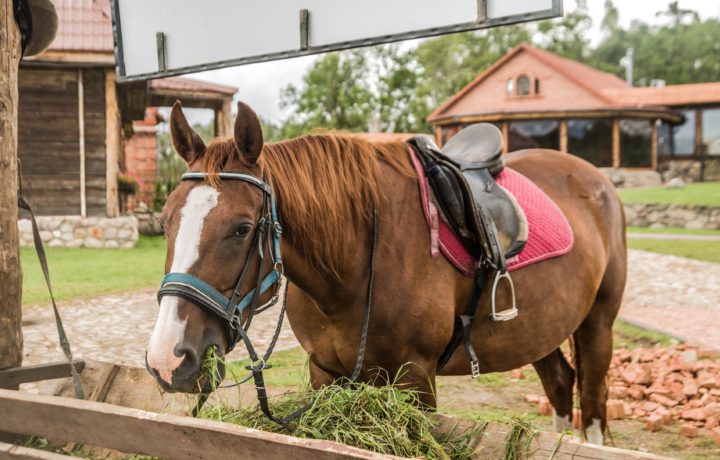It’s essential to manage your horse’s weight, as this can have a huge impact on its overall health. If your horse is overweight,they’re more likely to suffer from conditions like joint problems, laminitis, and metabolic issues – affecting their overall quality of life. There are a few steps to take if you suspect your horse is overweight, from spotting the initial signs to balancing the diet and putting in place a weight loss strategy suited to your horse. We’ll take a closer look at this below.
Signs of obesity
There are a range of signs you should look out for if you suspect your horse is overweight. Regular body condition scoring and weigh taping is important to determine whether your horse is losing or gaining weight. When body condition scoring your horse, you should be aware of additional fatty deposits and changes in condition that can indicate weight gain. Keeping a record of your horse’s weight means you can take the steps to adjust its diet as necessary.
The dangers of obesity
So, why is it important to monitor your horse’s weight? There are a few issues that can come from your horse being overweight. Joint problems, like arthritis, may be exacerbated by the additional weight placed on your horse’s limbs , which may limit their ability to exercise, as well as causing pain and discomfort. Laminitis and metabolic problems like EMS and insulin dysregulation are also more likely to occur in overweight horses and ponies.
Balancing nutrition
If you’re body condition scoring your horse regularly and you notice they are putting on weight, it is often not the best course of action to simply reduce the amount of bucket feed you are using. Feeding just a small handful of a coarse mix or cube may be lower in calories, but will not typically be sufficient to supply the vitamins and minerals your horse needs. Instead, a low calorie chopped fibre feed alongside a balancer or vitamin and mineral supplement is often a preferable choice for horses who are carrying too much weight. The amounts and types of feed should be based on your horse’s lifestyle and daily activities. However, the main source of energy (calories) in most horses’ diets is grass. Limit turnout time, fit a grazing muzzle, strip graze or use a track system, or stable more and offer a low-calorie hay replacer. Straw can be used to replace up to 30-50% of the horse’s hay or haylage ration to provide increased chew time without as many calories.
Weight loss strategies
When implementing nutritional changes into your horse’s routine, make sure you do this gradually to reduce the risk of digestive upset. You should also ensure that you manage your horse’s weight loss in a controlled way, with a weekly weight loss of 0.5-1% of bodyweight being realistic. You should also implement an exercise plan to suit your horse to get it moving. For more information, talk to an equine nutritionist or your vet.
Supplementing the diet
It’s important when implementing a new diet for your horse that you ensure it’s still receiving the vitamins, minerals, and other nutrients it needs to live happily and healthily. Feeding recommended quantities of an appropriate balancer or broad-spectrum vitamin and mineral supplement alongside sufficient forage should help to ensure these requirements are being met.
Monitoring progress
Once you’ve implemented these changes to your horse’s diet gradually, you’ll need to monitor their progress. You should continue to both body condition score and weigh tape your horse regularly to get an idea of whether the changes are working. Keep up with regular consultations with an equine nutritionist to ensure your approach is suitable for your horse, and to make any adjustments that may be required.

